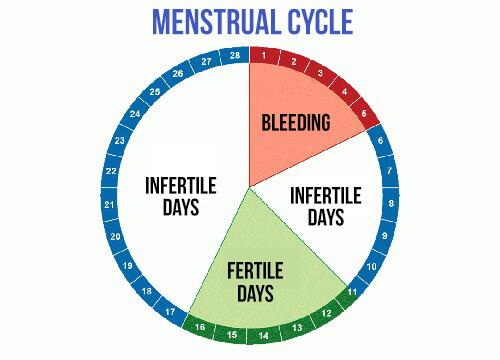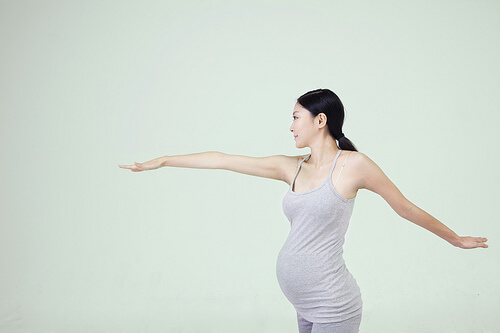What Are Your Most Fertile Days?

Are you trying to get pregnant and are feeling more and more impatient? Has it crossed your mind that maybe you or your partner have fertility problems? The first step is to relax and learn to detect what your most fertile days of the month are with the tips below.
Make a Calendar
The first step in detecting what your fertile days are depends on the regularity of your period. If it is completely regular, this task will be very easy. However, if your period varies, you will have to keep in mind several variables.
In both cases, we recommend that you take a calendar and write down the important information that we will explain below so that you can see what your tendency is.
Determine Your Fertile Days
In order to know what your most fertile days in your cycle are, or the days when you are ovulating, you should count backwards 14 days from the first day of your next period.
These 14 days are approximate, but you could say that in a cycle that lasts for 28 days, the most fertile days are right between one period and the next. However, you should subtract the first day of the next period and not count the one you already had.

How Many Days Am I Fertile?
Keeping in mind that ovulation lasts between 12 and 24 hours and that sperm can stay alive for 2 to 5 days until they inseminate the egg, you only have 6 fertile days a month on average. Of those 6 days, the most fertility will be the day of ovulation and the two following it.
That’s why it’s important that you’re aware of other signs from your body to know when they are.
Pay Attention to Signs from Your Body
Your body is wise, and as you get closer to your fertile days, you can also notice some changes like the following, for example:
- You feel more attractive.
- You have a higher sex drive.
- Vaginal discharge will have a viscous texture and a transparent color, similar to egg whites. This discharge is better for carrying sperm to the egg. It will appear a few days before ovulation and then will tend to become thicker and whiter.
- You may experience symptoms similar to those of period, like discomfort, swollen breasts, etc.
- Your basal temperature will vary.
You might be interested in:
Try these 5 Home Remedies to Help you Control Vaginal Discharge

Check Your Basal Temperature
Knowing your basal temperature not only helps you determine which days are your fertile days, but also to be able to keep them in mind when on natural birth control methods. In fact, it’s one of the oldest systems there is.
Basal temperature is always measured when your body is at rest, right when you wake up if possible, and with a thermometer that’s as exact as possible.
Start to take your temperature the fifth day of your cycle, through your rectum or vagina, for three minutes.
There are some factors that can vary real basal temperature:
- Not sleeping for three hours beforehand or insomnia.
- Moving right before taking your temperature.
- Taking your temperature at a different time than usual.
- Eating a different dinner than usual.
- Colds or weakened states.
- Meditation.
- Changing thermometers.
- Using the thermometer on another part of your body.
Also read:
So When Are my Fertile Days?
You can make a graph so that the result is more visible.
Before ovulation, your basal temperature tends to vary between 97°F (36.1°C) to 99°F (37.2°C). Because of hormonal changes, your temperature may increase from 0.5 to 1 degrees Fahrenheit in the two or three days prior to ovulation. The increase remains until the end of your cycle when your next period starts.
You should do this graph for at least two months in order to be sure about your fertile days.
All cited sources were thoroughly reviewed by our team to ensure their quality, reliability, currency, and validity. The bibliography of this article was considered reliable and of academic or scientific accuracy.
- M. Almeida Kawamura. Fertilidad del suelo. Metología cientifica. 2014
- C. Ortiz Solorio. Los suelos y su fertilidad. Biodiversitas. 2012
- L. Vera-Gamboa. Historia de la sexualidad. Revista Biomed. 1998.
- MedlinePlus. Identificación de días fértiles para el embarazo. https://medlineplus.gov/spanish/ency/article/007015.htm
- Office on Women’s Health. Calculadora de ovulación. https://espanol.womenshealth.gov/ovulation-calculator
- The BMJ. 2000 Nov 18; 321(7271): 1259–1262. The timing of the “fertile window” in the menstrual cycle: day specific estimates from a prospective study. doi: 10.1136/bmj.321.7271.1259
- University of California San Francisco. Conception: How It Works. https://www.ucsfhealth.org/education/conception-how-it-works#1
- StatPearls [Internet]. Physiology, Ovulation, Basal Body Temperature. (2019). https://www.ncbi.nlm.nih.gov/books/NBK546686/
This text is provided for informational purposes only and does not replace consultation with a professional. If in doubt, consult your specialist.








